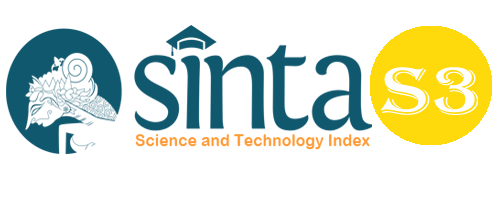Impact of Good Governance on Development in Kenya, the Case of Garissa County
Abstract
Good governance is regarded as significant when it’s making progress towards achieving objective. Good governance cannot be underrated since it plays a vital role for a healthy, independent, robust economy and culture. Economy consists of three types that include economic, political and administrative. The government of the day is sole responsible in nurturing these types of economy. Economy is a backbone for any developing country and contributes a lot to the development of country’s infrastructure, for this purpose the government should promote accountability of resource through proper allocation and eliminating corruption. Therefore the strength of good governance depends on economic welfare, reduced corruption, resisting political instability and unrest and enhancing basic need for the nation through effective administration. The aim of this article is to examine the concept of good governance and the impact on economic development in Kenya. The population of the study constituted of staff employed by national and county government. Both primary and secondary data was employed in the study. The study has found that though good governance indicators had reflected in parts of the government sectors, still some potential pillars are missing hence compromising development. Moreover, in order to strengthen good governance both tiers of government should nurture element good governance in order to stimulate economic growth since good governance is backbone to economic development.
Keywords
Full Text:
PDFReferences
D. Kaufmann, A. Kraay, P. Zoido-Lobaton: “Aggregating Governance Indicators,” World Bank Policy Research, Working Paper No.2196, 1999; D. Kaufmann, A. Kraay, M. Mastruzzi, Governance Matters IV: Governance Indicators for 1996-2004, World Bank, 2005. Knack et al. (1999).
M. Khan, K.S. Jomo, eds., Rents, Rent-seeking and Economic Development, Theory and Evidence, p.338; M. Khan, “State Failure in Developing Countries and Strategies of Institutional Reform,” pp. 165-195.
Kauffman D. and al.1999, 2005, Knack S. and Keefer P. 1997, Hall, R. Jones, C.1999, Clague, C. Keefer P., Knack S. and Olson M., 1997, Barro R., 1996, Rodrick D., 1995, 1997, and 2002).
Ndegwa, S.N., 2002. Decentralization in Africa: A Stock-Taking Survey, Africa Working Paper Series No. 40, the World Bank, Washington, D.C
Bardhan, P. And Mookherjee, D., 1998. Expenditure Decentralization and the Delivery Of Public Services In Developing Countries; IED Discussion Paper, Boston University, Boston MA
Bello-Imam, I.B & Agba, A.V., 2004. “Fiscal Federalism, the National Question and Resources Control: Practice and Prospect”. In Democratic Governance & Development Management In Nigeria’s Fourth Republic, 1999 – 2003, I.B. Bello-Imam & Mike Obadan (Eds), Ibadan: JODAD Publishers,
Rondinelli, D., Nellis, J.R and Cheema, S. (Eds)., 1984. Decentralization in Developing Countries. World Bank Staff Working Papers No. 581, Washington D.C
Nyanyom, 2010. Devolution in Kenya’s New Constitution Working Paper No. 4. Nairobi: Society for International Development.
Oates, W., 1999. An Essay on Fiscal Federalism, Journal of Economic Literature, Vol. XXXV
Omari, A. O., Kaburi, S. N., & Sewe, T., 2013, February. Change Dilemma: A Case of Structural Adjustment through Devolution in Kenya.
Ostrom, E., Schroeder, L. And Wynne,S.,1993.Institutional Incentives And Sustainable Development: Infrastructure Policies In Perspectives, West view Press: Boulder, CO
Qian, Y. And Weingast, B., 1997.Federalism as a Commitment to Preserving Market Incentives’ Journal of Economic Perspectives, Vol.11, No 4, Pp.83-92
Reddy, P.S., Sabelo, T., 1997.Democratic Decentralization and Central/Provincial/Local Relations in South Africa. International Journal of Public Sector Management, Vol. 10, No. 7, 1997, P. 572-588.
Dary Rodrik (2010), The Architecture of Government: Rethinking Political Decentralization. NY: Cambridge University Press.
DOI: https://doi.org/10.33258/birci.v6i2.7539
Article Metrics
Abstract view : 5 timesPDF - 6 times
Refbacks
- There are currently no refbacks.

This work is licensed under a Creative Commons Attribution-ShareAlike 4.0 International License.

This work is licensed under a Creative Commons Attribution-ShareAlike 4.0 International License.

_.gif)

















_.gif)



